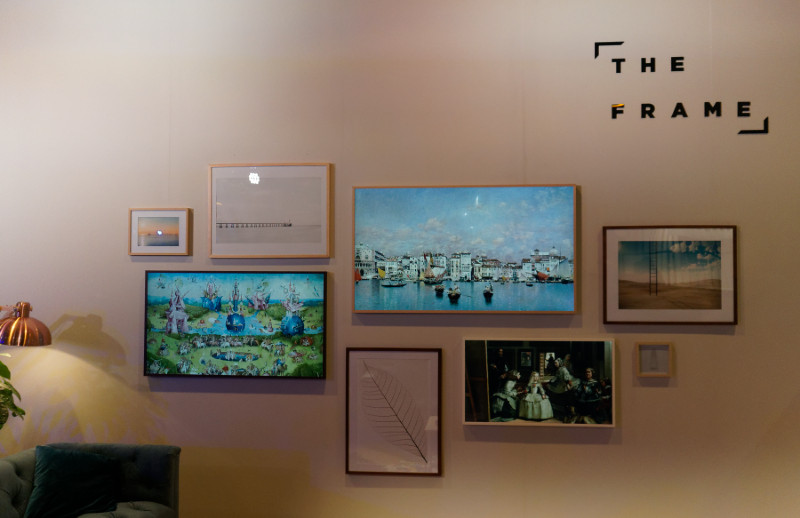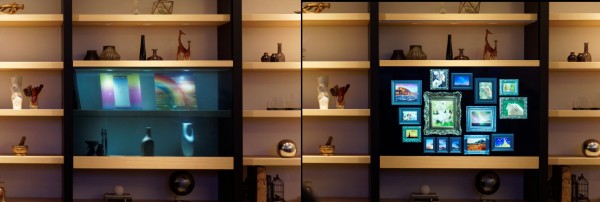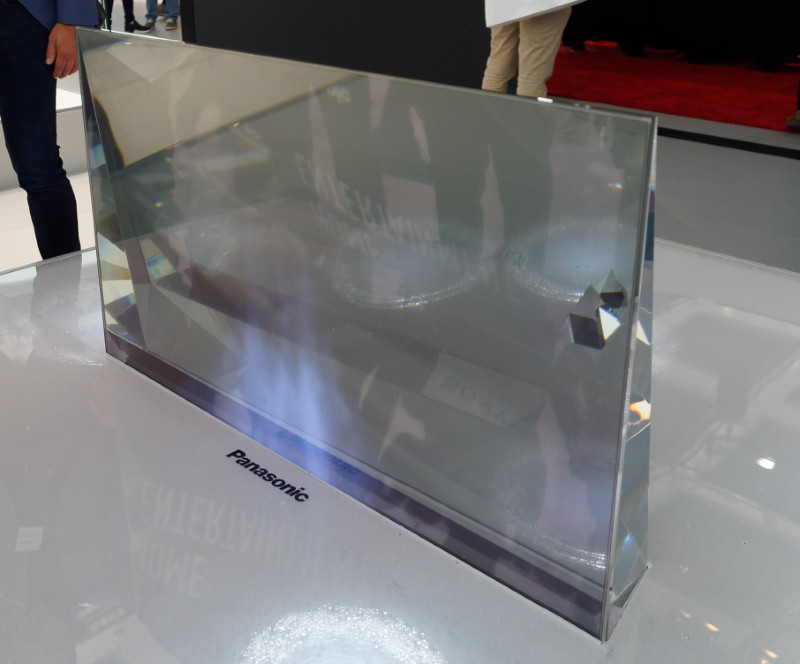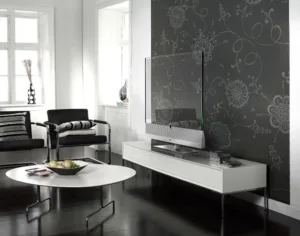TVs are not just electronics, they are also furniture and the importance of design to the development of the market should not be underestimated, especially as displays get larger and larger.

TV has a central place in most homes. In countries where there is lots of space and big houses, the TV may be in a special room, but in most of the world, the TV has to exist in the main room and forms a part of the furniture. As part of the furniture, buying decisions are taken by those in the household that choose the furniture. In less enlightened times, this was known as the “WAF”, or “Wife Acceptance Factor” (although as long ago as 2003, I proposed the acronym “SOFA” – Significant Other Factor of Attractiveness”).
There’s no doubt in my mind that it was largely the massive improvement in the attractiveness of the designs that helped to drive the adoption of flat panel TVs as well as the image size and display performance improvements that came along. In fact, it was several years into the development of the flat panel TV market before I saw a flat panel TV that came close to the performance of my Sony Trinitron CRT TV. Even when I decided that I had finally seen an LCD that might be acceptable as a replacement, it was really just about the performance in high ambient that made it acceptable. On image quality in a darker environment, it took a long time for flat panels to match CRTs and, as an image quality geek, I often got frustrated that people thought that LCDs looked better, when to me, they looked so bad!
The importance of design continues and we have seen LG working hard to develop its wallpaper TV, based on the physical design and have seen Samsung sacrificing image quality by using edge lighting in many of its high end sets to get slimmer designs rather than using direct LEDs to improve image quality, but with more depth.
Home makers, of either gender, often don’t mind having a big set when watching the TV, or playing a game. However, what many dislike is the ‘black hole on the wall”. That is to say, they dislike the big black screen that remains when a flat panel display is powered off. Over the years, a number of different approaches have been tried to get over this issue. Traditionally, in the US, TV sets, especially big old CRTs were often hidden away in armoires – big cupboards that hid the bulk, but took up a lot of space. European design TVs have also taken this approach and for some time, Loewe of Germany worked with Interlübke, the high end furniture retailer – I remember noting that in the joint advertising, the furniture seemed to be always shown with a way of covering or hiding the TV.
Don’t Have an FPD, Then!
One way to get rid of the ‘black hole’, of course, is to simply forget about having a flat panel display and use a projector, a topic addressed by Kenneth Li in a Display Daily a couple of months ago. As projectors get brighter and have longer life light sources, that becomes more and more reasonable, although delivering HDR will be a challenge.
A second alternative is to avoid the ‘black hole’ effect by disguising the set as a picture and while there are several small specialist suppliers, like Meural, the main recent proponent of this is Samsung, which has done a lot to promote its ‘Frame’ TV concept and is making it possible for consumers to access special artworks to show. To do this, the set needs to have a mode that reduces power consumption and brightness and also needs a matt surface to make the image look more like an artwork.
 Samsung was promoting the ‘Frame’ TV at IFA this year. Image:Meko
Samsung was promoting the ‘Frame’ TV at IFA this year. Image:Meko
A third approach is to use a flexible display and simply ‘roll it up’ when it’s not in use, like a projection screen. NHK has shown this kind of idea as a concept (but not demonstrated) when showing its 8K displays, currently made from four UltraHD OLEDs. That looks reasonably feasible, to me, as flexible OLEDs have been widely shown and TV has the advantage of not needing touch. It doesn’t look at all realistic for LCDs, but microLED on flexible substrates could be very interesting in this application.
The invisio design concept for Loewe from Michael Friebe of Yanko Design was entered for a 2011 design contest. Image:Yanko Design
A fourth alternative is to make the TV less apparent is to make it transparent. That has long been a dream of TV designers, but is difficult if you want to use the mainstream, LCD, technology. That’s because LCDs are backlit and somehow you need to get the light behind the panel. Even if you have an edge-lit display, there will be a number of optical elements needed behind the panel. Further, the filters needed to meet the demand for wider colour gamut mean that not much of the light can be transmitted.
However, OLED is potentially a good candidate display technology, and Samsung did make a relatively small number of large transparent displays for commercial applications and was looking to more than 50% transmissivity in the future. However, the company was not successful in developing its large OLED production capabilities and withdrew the product, to the disappointment of some buyers and specifiers. (At MWC, Dell was using some on its booth and nobody was looking at the Dell PCs when we went past, they were all looking at the transparent signage!)
LG Display has also shown transparent OLEDs, but its method of making large OLEDs uses filters, so they are not very transparent. To work well in transparency, the company would need to move to a direct OLED approach which looks some years away.
 Panasonic showed this Transparent TV at CES in 2016. Click for higher resolution. Image:Meko
Panasonic showed this Transparent TV at CES in 2016. Click for higher resolution. Image:Meko
The ‘dirty little secret’ of transparent emissive displays such as OLED is that you can’t make black unless you block the display, so demonstrations of transparent TVs have sometimes added a blocking LCD behind the OLED for when it is in regular TV mode. Of course, that LCD can be more like a privacy filter LC unit than a full display. You only need a single big pixel and there is no need for a really fast response. Panasonic has shown transparent OLEDs with this kind of blocking at CES and IFA – and drawn a lot of attention. Standing by the demonstrations shows that there is a lot of real consumer interest in this kind of TV, especially, as Panasonic had done, when the TV design is integrated into the furniture. Panasonic showed several modes on the motorised set. (see the video at the end of this article)
- In regular TV mode – at the correct height for viewing and with a black layer behind for good picture quality
- In transparent TV mode – where objects can still be seen through the display, which would be fine when you are using the TV as an Information Display, rather than for video watching.
- In the off mode, when it was transparent and may be moved to a different height on a wall fitment.
I’d be surprised, given the reaction of consumers, if this kind of product did not find a market in premium TV sometime in the future, although that would be dependent on somebody actually being able to make large OLEDs without filters, and that’s not a given! Bob Raikes
 Panasonic showed this Glass Wedge TV Concept at IFA in September, Image:Meko
Panasonic showed this Glass Wedge TV Concept at IFA in September, Image:Meko

